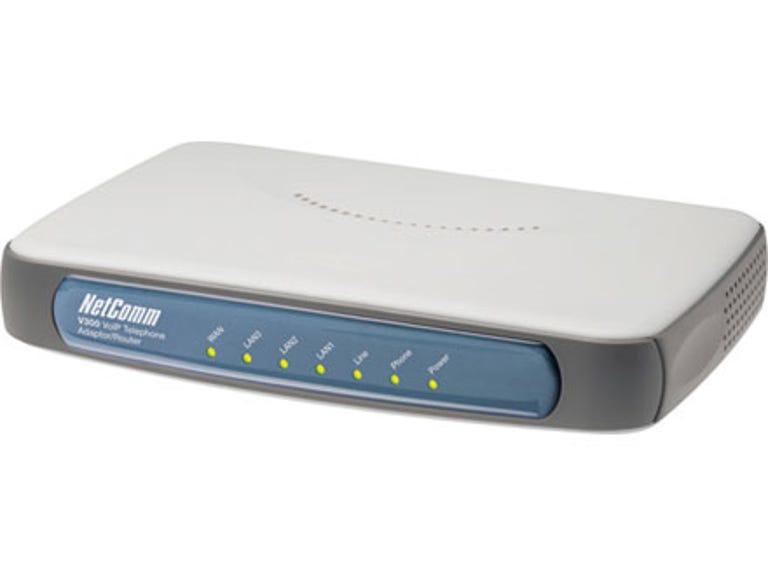 Why You Can Trust CNET
Why You Can Trust CNET NetComm V300 review: NetComm V300
The V300 offers quality voice services and simple router functionality in an easy to set up package.
Design
It's always hard to adequately discuss the design of routers for one simple reason -- pretty much every router just looks like... well... a router. Netcomm's V300, if anything, looks more like a router than most routers. If we were feeling uncharitable, we might even be drawn to say that it's got a design that only its mother could love, with a mix of grey and white plastic, indicator lights flashing on the front and ports connecting on the back. It's certainly not something that you'd want prominently in your living room decor, but like most consumer routers, it's small enough to be tucked into a corner out of prominent sight. It lacks any kind of wireless functionality, however, so it'll need a few telltale cables hooking up to it regardless.
The Good
The Bad
The Bottom Line
Features
As routers go, the V300's fairly pedestrian; it's a 3 port 10/100 router sans wireless capabilities. That's not what Netcomm sells the V300 on, however, as its prime function is to act as a VOIP server. It's equipped with QoS services geared towards VOIP services, as well as a PSTN passthrough port. The advantage with this is that unlike other VOIP devices (including Netcomm's V100), you don't need to have two telephones in the house -- one for outgoing VOIP calls, the other for incoming PSTN ones -- as incoming calls come direct to the one phone, and you can opt to use the PSTN service for outgoing calls if your VOIP service isn't available.
In the case of genuine 000 calls, the V300 automatically routes through the PSTN network to enable emergency services to locate you quickly -- it should be noted that for reasons of public safety we didn't test this functionality, however, and Netcomm does have a long and detailed disclaimer about the lifeline functionality of the router at the front of the product manual.
Performance
One big plus in the V300's favour is that it is remarkably easy to set up, as long as you've got your VOIP server settings handy -- your VOIP provider should be able to let you know which settings are appropriate, and in our testing our VOIP provider already had a document with all the necessary settings laid out for us. Once you've saved your VOIP settings on the router and performed a necessary reboot, you're good to go. The QoS settings are likewise simple to use -- simply select your broadband speed, enable QoS and you should have better VOIP performance, although obviously this can vary depending on your actual broadband usage and the quality of your connection.
The PSTN passthrough also worked seamlessly in our tests. Incoming calls came through with no problems, and the default setting of the router is to let you elect to use the PSTN service by entering a double hash to switch over. Aside from the aforementioned emergency services, this can come in useful for businesses such as such as pizza stores that may use "13" prefixed numbers to route you to the correct store, as well as for promotional deals from your PSTN provider that may make certain call types -- especially mobile calls -- cheaper than their VOIP equivalents.
Call quality is quite a tricky thing to judge, as there are so many variables to juggle for making a good call. Certainly, on a system with 256kbps dedicated to VOIP QoS, we had a large number of successful and clear mobile, local, STD and international calls routed through the V300 with no problems. The default manual switch to the lifeline also worked well during our test period.



